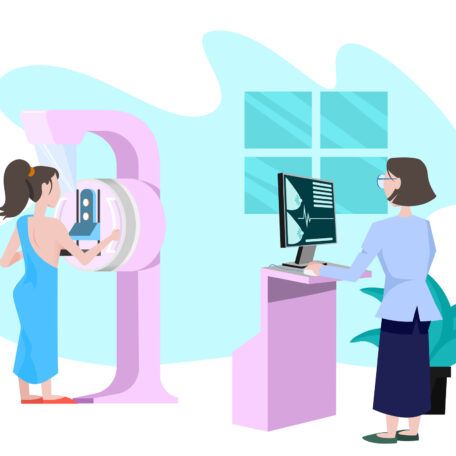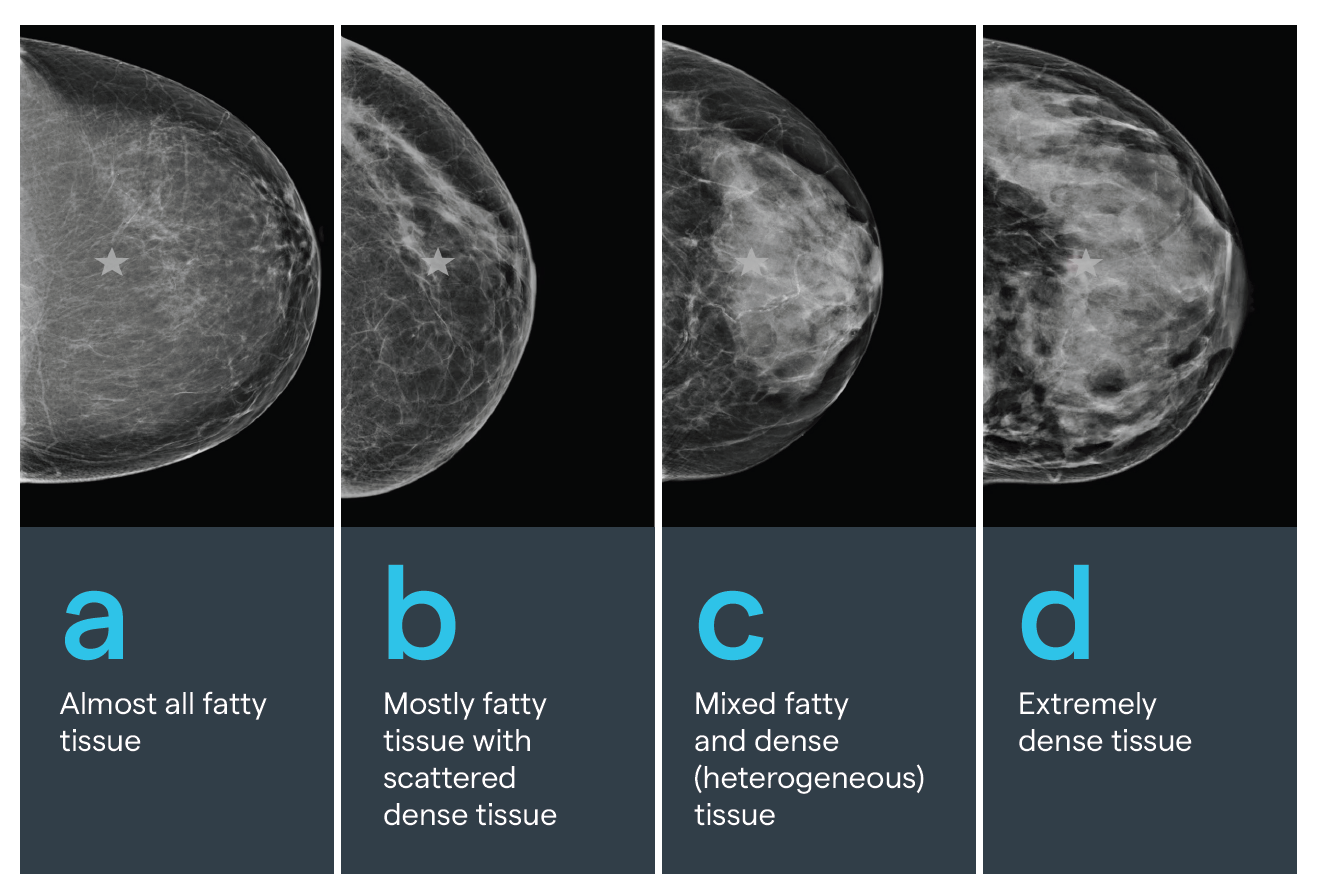Breast Health
Want to learn more about this at Kettering Health?
Approximately half of all women have dense breast tissue—which means there’s a good chance you’re among them. If so, you might wonder how breast density can affect your overall breast health.
What is breast density?
“Breast tissue is made up of a mixture of glandular and fatty tissue,” says breast imaging radiologist Dr. Meghan Musser. “Breast density refers to the amount of glandular tissue versus fatty tissue within a breast.”
A woman cannot determine her breast density through a self-exam or other means; only a mammogram can reveal it. “Breast density has nothing to do with how your breasts look or feel,” Dr. Musser explains. “It does not affect the fit of bras and swimming suits or determine the degree of sagging a woman experiences with age. It is an assessment based on the mammographic appearance of your breast tissue.”
When a woman gets a mammogram, the radiologist evaluates the breast’s composition. That evaluation assigns it to one of four breast density categories:
- A Predominantly fatty tissue
- B Scattered fibroglandular tissue
- C Heterogeneously dense tissue
- D Extremely dense tissue
Assessments can also be performed by computer software that objectively measures breast density. It assigns the mammogram to one of the four categories and calculates the volume of fibroglandular tissue compared to the overall volume of breast tissue.
All Kettering Health Breast Centers use computer analysis and radiologist assessment when assigning a breast density category. They include the type of tissue in the radiologist’s mammogram report.
Sally Grady, director of Kettering Health BreastCenters, says that along with the screening mammogram, each patient is offered the option of completing a comprehensive risk assessment. The assessment analyzes her risk factors and family history to determine if she is at higher risk of developing any of eight hereditary cancers (breast, ovarian, colon, uterine, gastric, pancreatic, melanoma, and prostate). If so, she receives guidance for finding information on how to mitigate that risk.
Why it matters
According to Dr. Musser, breast density isn’t directly linked to noncancerous issues such as cysts. Nor does it directly relate to comfort during a mammogram. “Compression is necessary to perform a high-quality mammogram, and women experience discomfort from compression to varying degrees, regardless of their breast density,” she says.
Unfortunately, high breast density does increase a woman’s chance of breast cancer. “Having dense breasts is an independent risk factor for developing breast cancer,” Dr. Musser explains.
“A woman in the highest breast density category (10% of all women) is four to six times more likely to develop breast cancer than women in the lowest density category.”
“This is why every woman needs to understand her breast density,” says Sally. “She should know what category she’s in.” High breast density also makes it more difficult to detect the presence of cancer. “Cancers can be hidden by dense tissue,” Dr. Musser explains.
“Both cancers and dense breast tissue are white on mammograms. Therefore, cancer can be harder or impossible to see on a mammogram if it develops in an area of dense tissue.”
Dr. Musser says that if a woman is diagnosed with cancer, her breast density doesn’t directly affect her treatment options. “Treatment decisions take into account multiple factors such as the size and grade of a tumor, the hormone receptor status of the tumor, and the woman’s age and overall health status,” she says.
The 3D difference
All Kettering Breast Evaluation Centers offer three-dimensional (3D) mammograms as their standard imaging. Whereas a traditional mammogram captures two-dimensional images of the breasts, a 3D mammogram captures images at multiple angles, which allows thin “slice” images to be created by the computer and viewed at one time.
“Advantages of 3D mammograms are increased cancer detection, and decreased number of women recalled [for additional] screening,” Dr. Musser says. “The radiation dose for 3D mammograms is slightly higher than for 2D; however, it’s still below the amount regulated by the FDA for mammography.
Dr. Musser adds that a 3D mammogram takes only slightly longer than a 2D mammogram to perform. Otherwise, the experience is the same as a 2D mammogram for the patient.
New Law Expands Insurance for 3D Mammography, Dense Breasts
Read More











